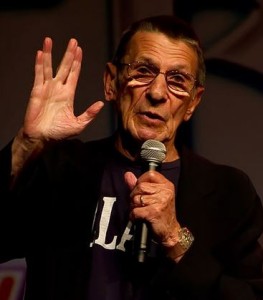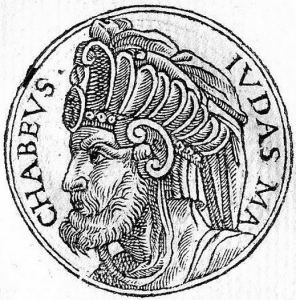The World’s Most Popular Alien
Leonard Simon Nimoy (1931-2015) was born in Boston to Orthodox Jewish-Ukrainian immigrants. He began performing in the Yiddish theatre when he was eight years old, and was encouraged to pursue a career in acting by his grandfather, against his parents’ wishes. He got his first role at 17, acting in a play about a Jewish family’s struggles during the Great Depression. Following this, he studied at Boston College, and made a living by selling vacuums, working in an ice cream shop, and at the National Yiddish Book Center. He then served for a year and a half in the US Army Reserve and earned the rank of sergeant. Nimoy continued to pursue his passion, though with very little success. He played tiny roles in over fifty movies, and had to deliver newspapers and drive a taxi at the same time just to get by. Finally, Nimoy got his big break when he was cast as Spock in Star Trek, which premiered in 1966. Spock quickly became one of “the most popular alien characters ever portrayed on television”. He played the TV role until 1969, for which he received three Emmy nominations. Nimoy improvised the famous Vulcan salute from his experiences at the synagogue as a child, where he watched the Kohanim bless the congregation. Nimoy adopted the Kohanic hand gesture, and adapted the Hebrew wording of the blessing to the Vulcan “live long and prosper”. He also invented the famous “nerve pinch” (to make a person unconscious), which has been both spoofed and adopted countless times in literature, television, and film. Nimoy played Spock again in eight Star Trek movies, including the most recent in 2013, and he directed two of them himself. Aside from this, Nimoy played in the original Mission: Impossible TV series (from which the Tom Cruise films were adapted), as well as many other movies and TV roles, together with a number of highly acclaimed stage performances (including Tevye in Fiddler on the Roof). Nimoy was also a photographer, producer, pilot, poet, writer (publishing two autobiographies), and musician, releasing five albums! All in all, Nimoy starred in 53 films, appeared in over 45 TV shows, 5 video games, and 3 music videos. Throughout his life, he was very active in the Jewish community, voicing a documentary about Hasidic Jews, leading a project to record Yiddish children’s stories, and preserving the Yiddish language, as well as dedicating much of his time to Holocaust remembrance. Nimoy passed away last week, aged 83. His former co-star George Takei said of him: “The word extraordinary is often overused, but I think it’s really appropriate for Leonard. He was an extraordinarily talented man, but he was also a very decent human being.”
Purim Begins Tonight!
Words of the Week
“Logic is the beginning of wisdom, not the end.”
“When you let me take, I’m grateful. When you let me give, I’m blessed.”
“The miracle is this: the more we share, the more we have.”
– Leonard Nimoy



